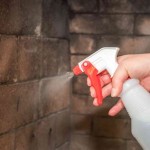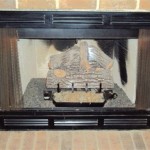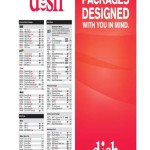Prefab Fireplace Outdoor: A Comprehensive Guide
Outdoor fireplaces have become increasingly popular, offering both aesthetic appeal and functional warmth to patios, decks, and gardens. A prefabricated (prefab) outdoor fireplace presents a convenient alternative to traditional masonry construction, offering a range of styles, sizes, and fuel options. This article provides an in-depth look at prefab outdoor fireplaces, covering their benefits, types, installation considerations, and maintenance tips.
Prefabricated outdoor fireplaces, as the name implies, are manufactured in a factory setting and delivered to the installation site as a complete or near-complete unit. This contrasts with traditional masonry fireplaces, which are constructed piece by piece on-site. The prefab approach offers several advantages, including faster installation times, often lower overall costs, and greater design consistency. Furthermore, prefab options often incorporate advanced safety features and meet stringent building codes, providing peace of mind for homeowners.
The increasing demand for outdoor living spaces has fueled innovation in prefab fireplace design. Manufacturers now offer a wide array of styles, ranging from classic brick and stone veneers to modern, minimalist metal designs. Fuel options have also expanded beyond traditional wood-burning fireplaces to include gas and electric models, each offering distinct advantages and disadvantages.
Key Point 1: Advantages of Prefab Outdoor Fireplaces
Prefab outdoor fireplaces offer several significant advantages over traditional masonry fireplaces, making them an attractive option for homeowners seeking to enhance their outdoor living areas. These advantages span cost, time, design flexibility, and safety.
Cost-Effectiveness: One of the primary benefits of prefab fireplaces is their cost-effectiveness. The controlled manufacturing environment allows for efficient use of materials and labor, resulting in lower production costs. Eliminating the need for skilled masons and extensive on-site construction further reduces expenses. The overall cost savings can be substantial, particularly for homeowners on a budget.
Faster Installation: Installation time is significantly reduced with a prefab fireplace. Because the unit is largely assembled prior to delivery, the on-site installation process typically involves setting the fireplace in place, connecting it to the appropriate fuel source (if applicable), and completing any necessary finishing touches. This streamlined process can save considerable time and disruption compared to the weeks or even months required for masonry construction.
Design Flexibility: While traditionally, masonry fireplaces offered greater customization, prefab models now boast a wide range of design options. Homeowners can choose from various styles, materials, and finishes to match their existing outdoor décor and personal preferences. Options include brick veneers, stone facades, stucco finishes, and contemporary metal designs. Many manufacturers also offer customizable features such as mantels, hearths, and firebox interiors.
Consistent Quality and Safety: Prefab fireplaces are manufactured under strict quality control standards, ensuring consistent quality and adherence to safety regulations. These units are typically tested and certified to meet industry standards for fire safety and emissions. Features such as spark arrestors, insulated fireboxes, and precise venting systems are often incorporated to enhance safety and performance.
Portability (in some cases): Certain types of prefab outdoor fireplaces, particularly those that are smaller and use propane or electricity, can be relatively portable. This allows homeowners to move the fireplace to different locations within their outdoor space as needed. This flexibility is not possible with a permanent masonry structure.
Key Point 2: Types of Prefab Outdoor Fireplaces and Fuel Options
The market offers a variety of prefab outdoor fireplaces, each with distinct characteristics and fuel options. Understanding the different types available is crucial for selecting the right fireplace for specific needs and preferences. The primary distinctions are based on fuel type and construction style.
Wood-Burning Fireplaces: These are the most traditional type of outdoor fireplace, offering the ambiance and crackling sounds of a real wood fire. Wood-burning prefab fireplaces typically feature a firebox constructed of refractory materials designed to withstand high temperatures. They require proper venting to exhaust smoke and combustion gases. Wood-burning fireplaces often require more maintenance due to ash removal and chimney cleaning.
Gas Fireplaces: Gas fireplaces offer convenience and ease of use. They can be fueled by either natural gas or propane. Natural gas fireplaces require a connection to a natural gas line, while propane fireplaces use portable propane tanks. Gas fireplaces are typically equipped with electronic ignition systems and adjustable flame controls. They produce less smoke and ash than wood-burning fireplaces, making them a cleaner option. However, they may not provide the same authentic fire experience as wood-burning models.
Electric Fireplaces: Electric fireplaces are the most convenient and environmentally friendly option. They require only a standard electrical outlet for operation. Electric fireplaces use electric heating elements to generate heat and often feature realistic flame effects. They produce no smoke, ash, or emissions, making them suitable for areas with ventilation restrictions. Electric fireplaces are also typically the most affordable option.
Construction Styles: Beyond fuel type, prefab fireplaces also vary in their construction style. Options range from modular kits that require some assembly to fully assembled units that are ready to install. Some models are designed to be freestanding, while others are intended to be built into an outdoor kitchen or patio structure. Materials used in construction can include brick, stone, concrete, steel, and various composite materials.
Considerations for Choosing a Fuel Type: When selecting a fuel type, consider factors such as convenience, cost, environmental impact, and aesthetic appeal. Wood-burning fireplaces offer a classic fire experience but require more maintenance. Gas fireplaces provide convenience and cleaner operation but may lack the same ambiance. Electric fireplaces are the most convenient and environmentally friendly but may not offer the same visual appeal as traditional fire.
Key Point 3: Installation Considerations and Maintenance
Proper installation and regular maintenance are essential for ensuring the safe and efficient operation of a prefab outdoor fireplace. Adhering to manufacturer's instructions and local building codes is crucial for a successful installation. Regular maintenance will help prolong the life of the fireplace and prevent potential hazards.
Site Preparation: Before installing a prefab fireplace, the site must be properly prepared. This typically involves leveling the ground and creating a solid foundation. The foundation material may vary depending on the size and weight of the fireplace, but common options include concrete slabs, gravel beds, and paving stones. Ensure the foundation is large enough to accommodate the entire footprint of the fireplace and any surrounding hearth extensions.
Fuel Source Connection: If installing a gas fireplace, a qualified professional should connect the fireplace to the gas line or propane tank. Ensure the gas line is properly sized and installed according to local regulations. Check for leaks using a soap and water solution after connecting the gas line. For electric fireplaces, ensure the electrical outlet is properly grounded and capable of handling the fireplace's electrical load.
Venting: Wood-burning fireplaces require proper venting to exhaust smoke and combustion gases. The venting system should be installed according to the manufacturer's specifications and local building codes. Ensure the chimney is properly sized and capped to prevent drafts and water intrusion. Gas fireplaces may require venting depending on the model; check the manufacturer's instructions for specific requirements.
Clearances: Maintain proper clearances between the fireplace and any combustible materials, such as wood siding, decks, and furniture. Refer to the manufacturer's instructions and local building codes for specific clearance requirements. Insulating the fireplace with non-combustible materials can help reduce heat transfer and improve safety.
Regular Maintenance: Regular maintenance is crucial for prolonging the life of a prefab outdoor fireplace. For wood-burning fireplaces, remove ash regularly and clean the chimney at least once a year to prevent creosote buildup. Inspect gas fireplaces for leaks and ensure the burner is clean and functioning properly. Electric fireplaces require minimal maintenance but should be inspected for loose connections and damaged wiring. Inspect the fireplace structure for cracks, damage, or deterioration and repair as needed. Covering the fireplace when not in use can protect it from the elements and prolong its lifespan. Regularly cleaning the exterior of the fireplace will keep it looking its best.
By carefully considering these installation and maintenance guidelines, homeowners can ensure their prefab outdoor fireplace provides years of enjoyment and safe operation.

Outdoor Fireplaces Round Grove S

Outdoor Fireplace Kits Masonry Stone

Outdoor Fireplaces

Diy Outdoor Fireplace Kit Fremont Makes Hardscaping And Easy

Outdoor Fireplaces Diy Kits Plans Cape Cod Ma Ri

Outdoor Fireplace Kits Stonewood S Cape Cod Ma Nh Ct

Mason Lite Indoor Outdoor Wood Burning Fireplace Kit Patio Furnishings

Modular Outdoor Fireplaces Masonry Fireplace Industries Inc

Outdoor Fireplace Kits Masonry Industries Inc

Outdoor Fireplace Diy Kits Our Top 5 Reasons To Install One Southwest Stone Supply








